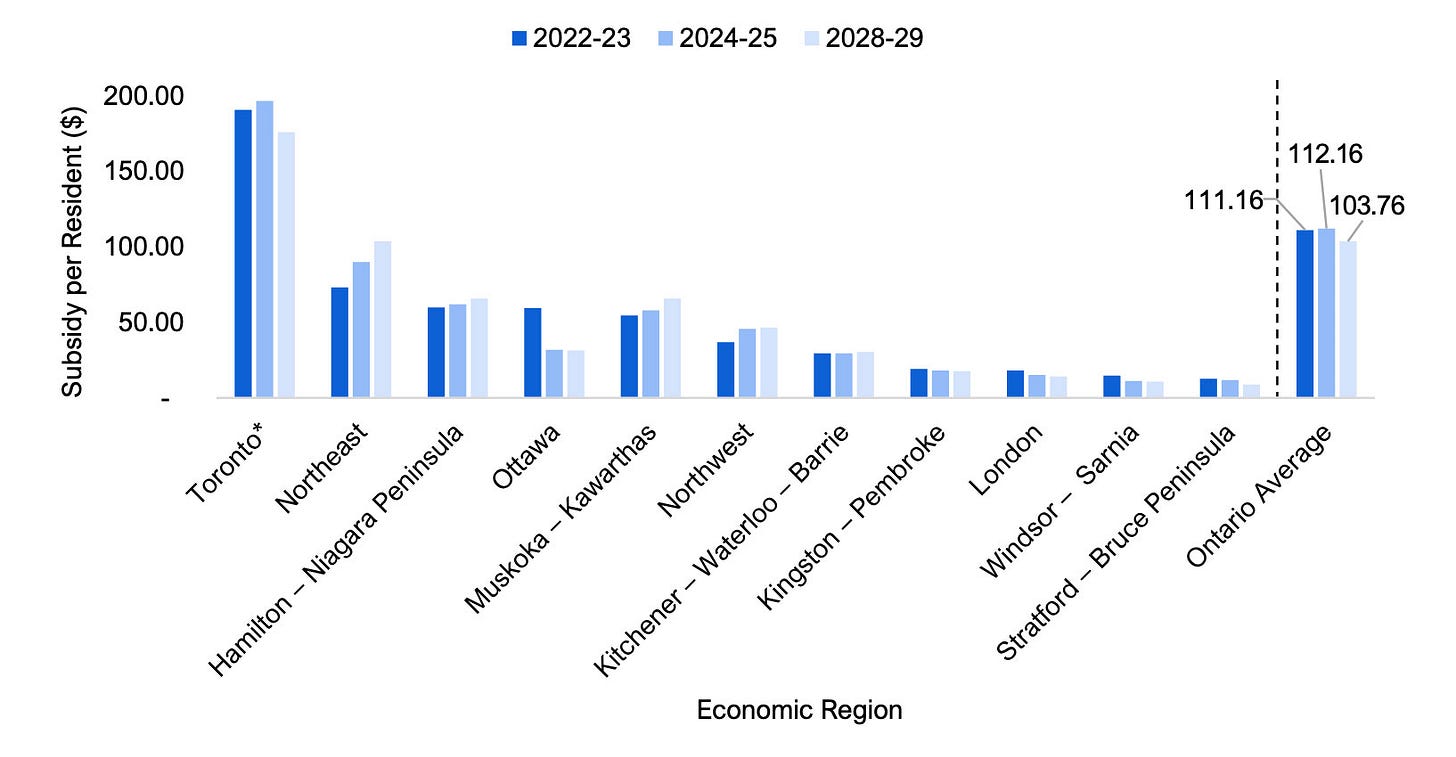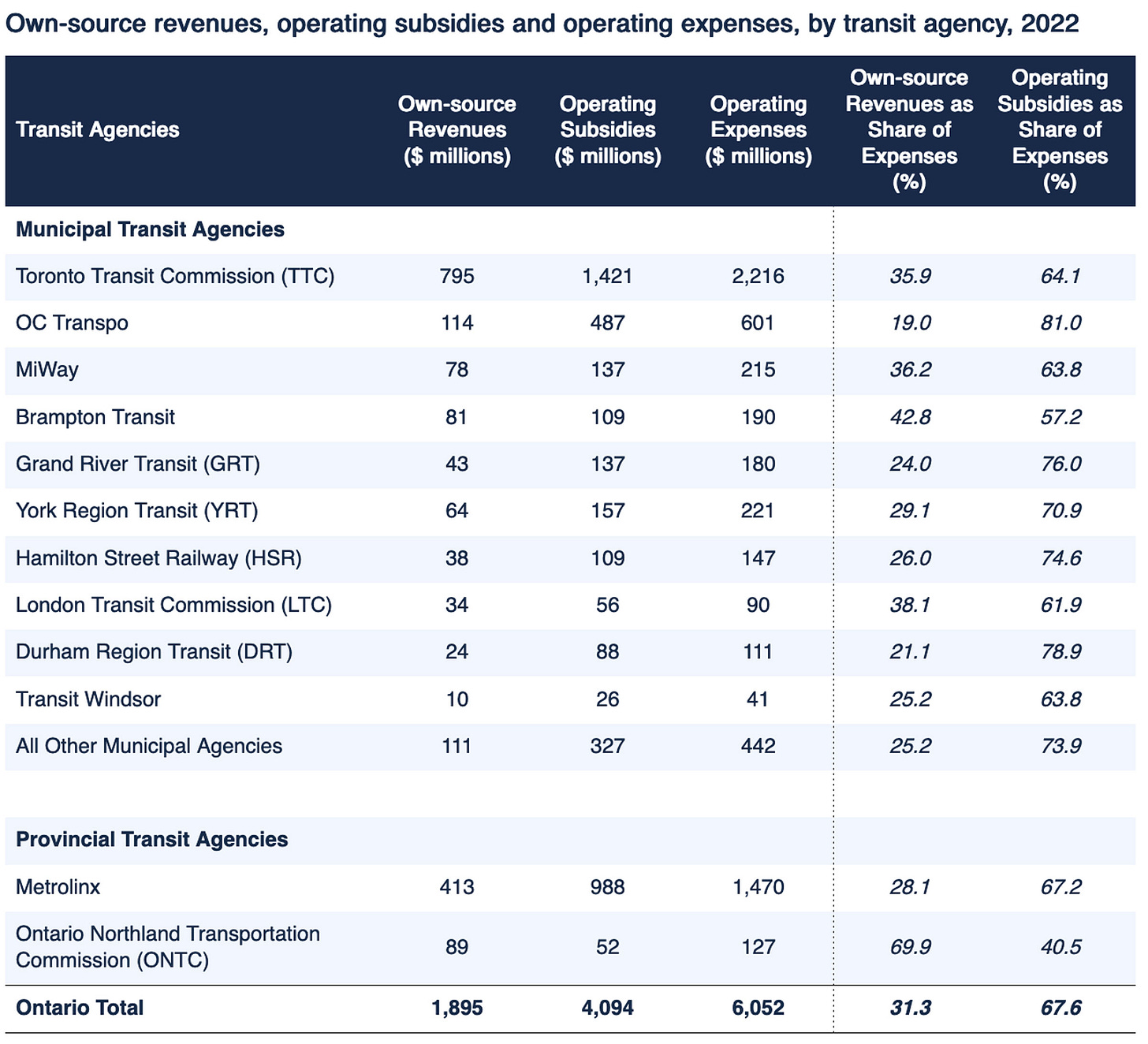What the Financial Accountability Office of Ontario says about Ottawa's transit finances
Toronto received 3x as much as Ottawa in operating subsidies
When Mayor Mark Sutcliffe launched his public campaign for financial fairness from the provincial and federal governments last month, his focus was on two areas: payments in lieu of taxes, and capital funding for transit.
This week a new report from the Financial Accountability Office of Ontario has revealed a massive inequity in operational funding between the Toronto area and the Ottawa area.
Here are three data points that stood out to me in the report:
In 2022-2023, Toronto received more than three times as much operational funding per capita from the province as Ottawa. The Ottawa area received $60 per resident, while the Toronto area received $191 per resident from the provincial government. Much of Ottawa’s funding was from a special fund for COVID-19 recovery, which ended in 2022.
Provincial subsidies for Ottawa are projected to plummet over the next five years, while Toronto’s funding will stay relatively constant. Ottawa’s drop is largely due to the end of COVID funding in 2022, with the remaining subsidy coming from gas taxes. Toronto’s high rate of provincial subsidy comes from extra provincial funding to the Toronto Transit Commission for subway operations, and from 100% funding of Metrolinx, which provides rail service. We’ve been asking for equivalent funding for Ottawa’s LRT operations.
In 2022, Ottawa ranked lowest in the province for percentage of revenues that come from fares, at 19%. The report refers to fares as “own-source revenues”.
(For 2024, fares were budgeted at $175-million, or 23% of transit revenue. Due to lower-than-predicted ridership, and a higher proportion of riders using discounted fares (university students, seniors, low-income passes), actual fare revenue is trending at least $25-million lower than expected this year.)
In 2024, the provincial government and federal government will contribute about $78-million in total to Ottawa’s transit operations, or just over 10% of our total budgeted revenue of $752-million.
A lot of residents point to Vancouver or Montreal as cities with transit systems that we should aspire to. I agree, and one key to their success is the much higher level of funding they receive from their provincial governments. It supplements the money they receive from fares and property taxes and allows them to provide broader coverage and more frequent service.
Twenty-five years ago, Ontario used to fund 50% of all transit operating costs. You can easily draw a line between the gradual decline of service in Ottawa, and the end of that provincial subsidy. As many other jurisdictions around the world have acknowledged, transit operating costs are too high to be funded from fares and property taxes alone.
Related:







The Ottawa region should have had a regional transit system, essentially GO Transit in Ottawa and area, decades ago. It’s appalling that our capital city is so neglected by the federal and provincial governments. Whatever it takes to make this happen should be done, even if that means the Ottawa area separates from Ontario to become a distinct district/territory that deals directly with the federal government. Ottawa and eastern Ontario in general have suffered under decades of neglect from conservative and liberal provincial governments. Change must happen, and soon.
Thanks Toon. Whether the transit is by GO Train or subway or LRT or bus, it’s all about providing mobility via mass transit. So IMHO it’s fair to compare the funding between the two regions, as the Financial Accountability Office has chosen to do. 👍